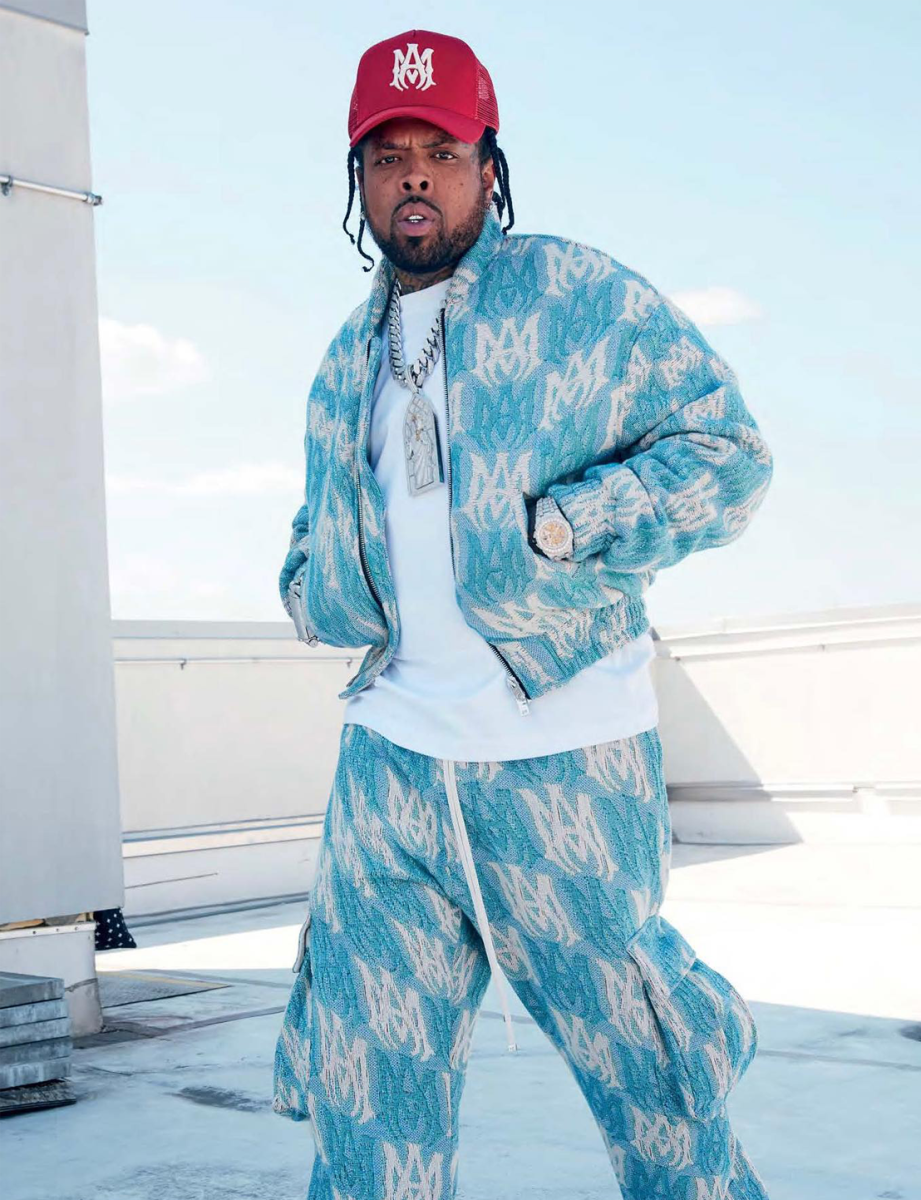Branded Clothing for Active Lifestyles: What Fabrics Support Performance?
Branded Clothing for Active Lifestyles: What Fabrics Support Performance?
Blog Article
The Importance of Lasting Clothes: Exactly How It Affects the Atmosphere and Your Storage room
Lasting clothes is increasingly acknowledged for its critical function in minimizing the environmental influence of the fast garment industry. By focusing on environment-friendly materials and ethical production approaches, it addresses pressing eco-friendly problems. This change not just profits the earth but also affects customer options, leading to a more thoughtful technique to closet administration. Comprehending these dynamics elevates important inquiries about fashion's future and personal obligation fit it.
The Ecological Footprint of Rapid Style

Benefits of Lasting Materials
Sustainable materials offer considerable benefits, especially via green material selections that lessen ecological damage. These materials likewise demonstrate durability and durability, reducing the demand for constant substitutes. Consequently, they add to a more lasting fashion business and promote responsible customer behavior.
Eco-Friendly Material Options
While the fashion sector has long been connected with quick fads and ecological harm, the surge of eco-friendly material choices provides a transformative possibility. Lasting materials such as natural cotton, hemp, and Tencel have gotten appeal as a result of their lower eco-friendly influence. These textiles are frequently produced without damaging pesticides and require less water, minimizing their carbon impact - Branded Clothing. Furthermore, numerous eco-friendly fabrics are eco-friendly, contributing to a round economic situation by minimizing waste. Selecting lasting materials not only supports eco accountable methods however also advertises much healthier ecological communities. As customers end up being more familiar with their buying power, the demand for environment-friendly fabrics motivates brands to innovate and adopt more sustainable manufacturing methods, inevitably profiting the world and future generations
Resilience and Durability Benefits
Many consumers are increasingly identifying the sturdiness and longevity benefits of lasting materials in their garments options. Unlike standard fabrics, lasting products such as natural cotton, hemp, and recycled polyester are engineered to stand up to deterioration, causing garments that last much longer. This lowered frequency of replacement not only saves consumers money over time but additionally decreases waste produced by fast style. Additionally, lasting clothing commonly employs environmentally friendly production approaches that boost textile stamina, contributing to a reduction in the overall carbon footprint. By buying resilient garments, customers can cultivate a more lasting wardrobe while enjoying high-quality pieces that keep their visual and capability in time. Toughness and durability stand as vital advantages of picking sustainable materials.
Decreasing Waste Via Sustainable Practices
Decreasing waste in the fashion business can be accomplished with innovative techniques such as upcycling and repurposing materials. Furthermore, adopting minimal wardrobe strategies encourages consumers to prioritize high quality over quantity, ultimately reducing apparel consumption. Together, these techniques contribute greatly to an extra sustainable apparel model.
Upcycling and Repurposing Products
Upcycling and repurposing materials have emerged as innovative strategies in the fashion business, changing disposed of textiles right into valuable new items. This method not just minimizes waste however likewise encourages creative thinking and uniqueness in apparel layout. By taking old garments and products, designers can develop special pieces that reflect personal design while minimizing the demand for new resources. Furthermore, upcycling often requires less energy and water compared to typical manufacturing processes, considerably lowering the ecological impact of fashion. As customers end up being extra conscious of sustainability, the popularity of upcycled clothing proceeds to increase, promoting a round economy. Ultimately, these practices contribute to a much more sustainable future, where fashion prioritizes ecological health and wellness over rapid manufacturing and usage.

Minimalist Wardrobe Strategies
As individuals increasingly seek to minimize their ecological effect, embracing minimalist closet approaches has actually acquired traction as an effective approach to sustainable fashion. These techniques stress high quality over amount, motivating consumers to curate a smaller collection of functional, sturdy garments. By concentrating on ageless pieces that can be blended and matched, individuals can decrease the regularity of purchases and eventually decrease waste.Additionally, minimalism promotes mindful intake, advising shoppers to assess the moral and environmental effects of their selections. This technique not just cultivates an extra lasting lifestyle yet additionally streamlines day-to-day decision-making concerning attire. As individuals embrace minimalist principles, they contribute to a style society that values sustainability and accountable consumerism, inevitably causing an extra eco-conscious society.
The Role of Ethical Labor in Sustainable Fashion
While lots of consumers are significantly aware of the environmental repercussions of their garments choices, the significance of moral labor methods in lasting fashion can not be neglected. Honest labor incorporates fair earnings, risk-free working problems, and respect for workers' civil liberties, forming the backbone of liable style manufacturing. Brands that prioritize ethical labor not only boost neighborhoods however additionally established a criterion for responsibility in the industry.Moreover, the assimilation of moral practices fosters transparency, enabling consumers to make informed options concerning their acquisitions. This method contrasts greatly with rapid fashion's unscrupulous labor designs, which typically prioritize earnings over individuals. By sustaining firms committed to honest labor, customers contribute to a system that values human dignity together with ecological sustainability. Subsequently, moral labor is not merely an add-on; it is vital to the more comprehensive mission of lasting style, guaranteeing that the pursuit for eco-friendliness does not come with the cost of human rights.
The Impact of Lasting Apparel on Carbon Emissions
Lasting clothing has the prospective to significantly lower carbon emissions related to the garment industry. Conventional garment manufacturing contributes significantly to greenhouse gas emissions, mainly as a result of energy-intensive manufacturing processes and the use of non-renewable sources. On the other hand, sustainable style concentrates on environmentally friendly materials, such as natural cotton or recycled fibers, which usually call for less power to produce.Moreover, lasting brands tend to adopt more effective production methods, lessening waste and reducing general exhausts. By focusing on durability and timeless style, sustainable apparel encourages consumers to get less regularly, additional lowering the carbon impact associated with overconsumption.Additionally, several sustainable brand names are dedicated to transparency in their supply chains, allowing customers to make enlightened choices that align with their values. Eventually, shifting towards lasting garments can result in a substantial reduction in carbon emissions, contributing to a much healthier world and a more sustainable future for the content apparel industry.
Sustaining Regional Economic Situations With Lasting Choices
The shift towards lasting apparel not just addresses ecological worries but likewise substantially advantages regional economies. By picking lasting fashion, customers commonly sustain neighborhood artisans and local business, improving community durability. These ventures generally operate a smaller scale, prioritizing workmanship and moral practices over mass production.Investing in locally made sustainable clothing cultivates job development and stimulates economic development within neighborhoods. As consumers come to be a lot more knowledgeable about the ecological impact of their purchases, they significantly choose products that reflect their values. This need encourages neighborhood makers to adopt sustainable practices, adding to a round economy.Moreover, sustaining neighborhood companies reduces transport emissions, straightening with eco-conscious consumer behavior. The interconnectedness of sustainable clothes and regional economic situations highlights the important duty that private choices play in promoting both economic and environmental health and wellness. By cultivating these regional links, neighborhoods can grow while additionally functioning towards an extra sustainable future.
Changing Your Wardrobe: Tips for a Sustainable Wardrobe
As people look for to reduce their ecological impact, transforming a closet into a sustainable wardrobe becomes a crucial step. One effective technique is to evaluate existing clothing, maintaining only products that are put on regularly which align with sustainability objectives. Focusing on high quality over amount is important; investing in sturdy items from green brands can substantially lower waste.Additionally, including used items can rejuvenate a wardrobe while decreasing ecological damage. Organizing clothes swaps with close friends or contributing extra things can better advertise sustainability.When purchasing, people must look for materials that are organic, recycled, or naturally degradable, and avoid rapid fashion merchants - Branded Clothing. Ultimately, practicing conscious consumption by attentively considering each purchase can add to an extra lasting way of living. By executing these pointers, one can develop a wardrobe that mirrors individual style while supporting environmental stewardship
Frequently Asked Concerns
How Can I Determine Sustainable Clothing Brands?
To determine sustainable clothes brand names, one should research materials used, check for accreditations like Fair Trade, and analyze the brand name's openness about their production processes, labor methods, and ecological influence, ensuring environmentally friendly and ethical methods are focused on.
What Are the Prices Related To Sustainable Fashion?
The prices connected with sustainable style can differ significantly. Higher production costs, ethical sourcing, and green materials commonly bring about increased list prices, which might hinder some consumers while attracting eco aware consumers.
Can Lasting Garments Be Stylish and Stylish?
Sustainable apparel can undoubtedly be elegant and fashionable. Designers progressively focus on cutting-edge materials and moral manufacturing methods, proving that style and sustainability can exist side-by-side. Consumers now have diverse options that mix looks with environmental awareness.
Just How Does Laundering Clothing Affect Their Sustainability?
Cleaning garments substantially impacts sustainability by consuming water and power, contributing to contamination, and creating microplastic release. Regular washing can break down materials, shortening their life expectancy and increasing the demand for replacements, ultimately aggravating environmental find concerns.
What Is the Life-span of Sustainable Clothes Contrasted to Quick Style?
The lifespan of sustainable clothes generally goes beyond that of rapid style things, typically enduring several years as a result of top quality products and craftsmanship. In contrast, rapid style garments may deteriorate swiftly, demanding even more regular replacements. Sustainable apparel is progressively identified for its crucial duty in minimizing the environmental impact of the fast style industry. While many consumers are increasingly mindful of the environmental consequences of their apparel selections, the importance of moral labor techniques in lasting fashion can not be forgotten. Branded Clothing. Sustainable clothing has the possible to significantly lower carbon emissions linked with the fashion sector. In comparison, sustainable fashion concentrates on environmentally friendly materials, such as organic cotton or recycled fibers, which often need much less energy to produce.Moreover, sustainable brand names have a tendency to embrace a lot more reliable production practices, minimizing waste and decreasing general discharges. By prioritizing resilience and ageless design, sustainable clothing encourages Discover More customers to get less regularly, additional lowering the carbon impact linked with overconsumption.Additionally, many lasting brands are dedicated to openness in their supply chains, allowing customers to make informed selections that straighten with their worths
Report this page